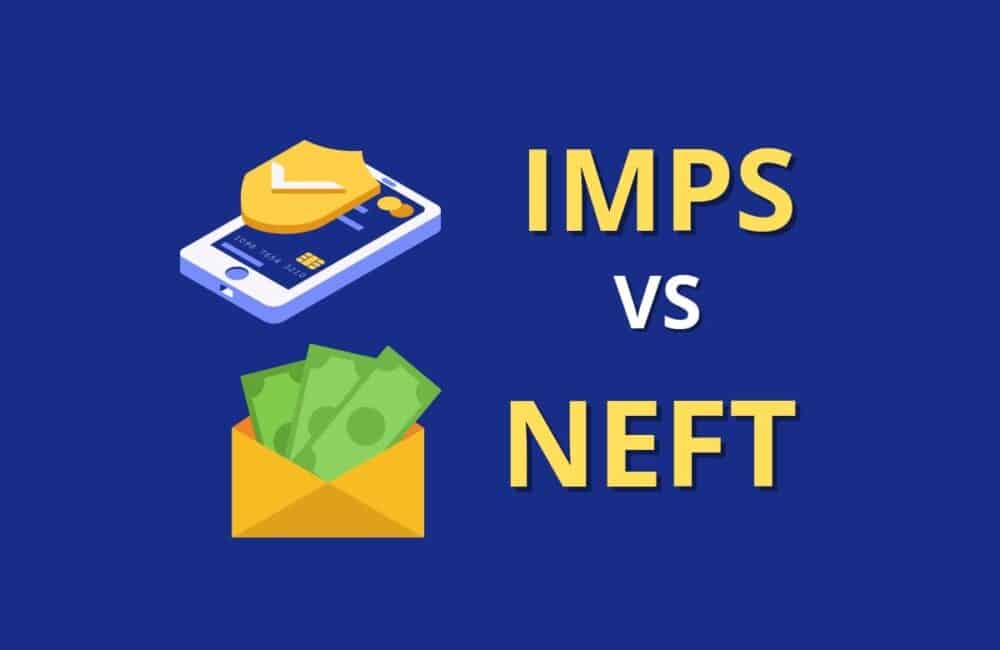As India started the journey of financial inclusion, the need for the digitalization of banking services was also felt. You know that India is quickly becoming a global digital economy giant which is evident from the launch of digital payments services like IMPS and NEFT. Meant to cater to different customers, IMPS and NEFT have many differences between them.
We are going to discuss key differences between IMPS and NEFT to impart a better understanding of these fund transfer services.
What Is IMPS?
IMPS stands for immediate payment service (IMPS) and it is an electronic fund transfer service for interbank funds transfers. It is a real-time fund transfer service that is available on multiple platforms like Mobile, Internet, ATM, SMS, etc. We can also transfer funds under IMPS through Prepaid Payment Instrument (PPI) issuers.
Immediate Payments Service (IMPS) is developed by the National Payments Corporation of India (NPCI) and was publicly launched on 22nd November 2010.
Before the launch of IMPS, customers were bound to use only NEFT & RTGS, as there were no other payment platforms available during banking hours. This service enables users to transfer money instantly and in real-time and functions even on holidays.
IMPS is a service that transfers funds instantly into the beneficiary’s account.
What Is NEFT?
National Electronic Funds Transfer (NEFT) is a payments service that enables funds transfer between participating institutions and banks. This service is owned and operated by the Reserve Bank of India and has PAN India coverage.
The money transfer requests in NEFT are settled on a half-hourly basis through the netting. Individuals can transfer money any time as this service is available 24×7. NEFT payments services are also available offline and can be used by individuals who do not have bank accounts.
The only drawback of the NEFT system is that it is not real-time. This service takes some time to transfer money from one bank account to another bank account.
Difference Between IMPS And NEFT
Though both the IMPS and NEFT have been developed to digitally modernize Indian banking transactions, there are salient differences between them.
Key differences between IMPS and NEFT are listed below:
| INDICATORS | IMPS | NEFT |
| Type of Settlement | One-one One Settlement | In Batches only |
| Min. Transfer Value | Rs. 1 | Rs. 1 |
| Max. Transfer Value | Rs. 2 Lakh | Depends on Customer Segment and Bank |
| Timings | 24×7 (Sundays and holidays included) | 24×7 (365 days a year) |
| Availability | 24×7 (365 days) | 24×7 (365 days) |
| Mode of Payment | Online Only | Online and Offline |
| Speed of Settlement | Immediate or Real-Time | Half hourly in Batches, not immediate |
| Launched | 2010 | 2005 |
Final Thoughts
Amount, speed, and timings are the three important factors while choosing NEFT or IMPS. However, both services are available round the clock. The difference between IMPS and NEFT is to be considered before you make payments through such platforms.
Frequently Asked Questions
What Customer Services Are Available Under IMPS?
Funds transfer and remittances services like sending and receiving money are available under IMPS. In addition to the above services, Query Service on Aadhaar Mapper (QSAM) service is also available through the IMPS portal.
How Can I Transfer Money Using IMPS?
IMPS allows funds transfer with the help of mobile phones, Bank Apps and SMS, ATMs, and Banks’ internet banking facilities.
What Are IMPS Charges?
IMPS charges depend upon the amount of money that is to be transferred. State Bank of India has waived off IMPS charges for fund transfers up to Rs. 2 Lakh.
Is IMPS A Subsidiary Of RBI?
No. IMPS is not an RBI subsidiary. It was launched by NPCI through its existing National Financial Switch (NFS) switch.
Which Mode Of Payment Between NEFT Or IMPS Is Preferred For High-value Fund Transfers?
For high-value transactions NEFT system is preferred over IMPS because IMPS has a maximum limit of Rs. 2 Lakh only.



